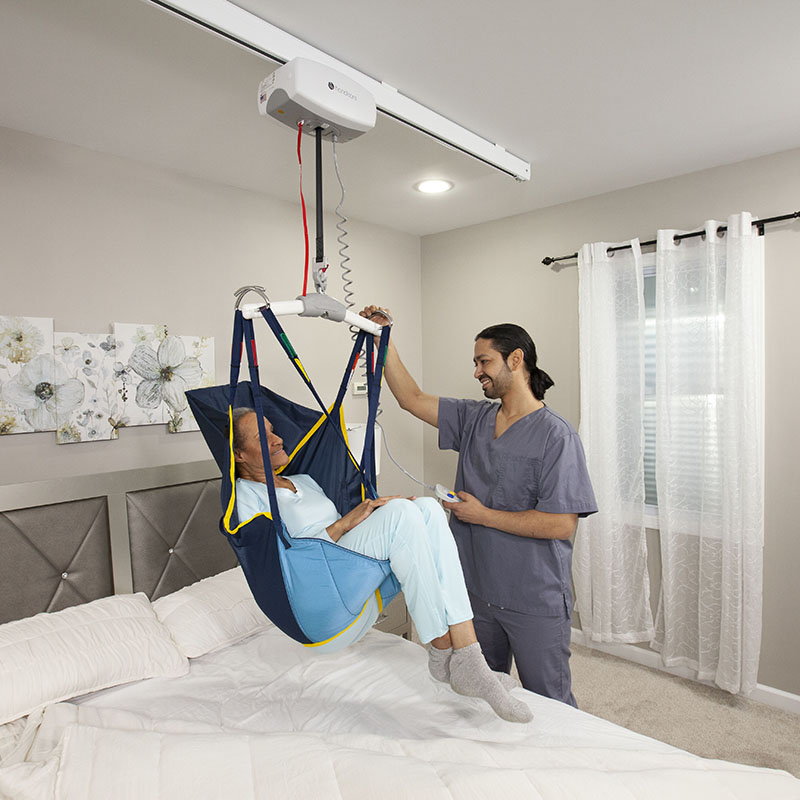The patient lift system is created to aid caregivers and health professionals in a safe and comfortable way to lift and transfer patients. They are crucial for people with mobility issues including elderly people, disabled persons and those recovering from surgery or injuries.

There are a variety of kinds of lift systems available that are suited to patients, including overhead Hoyer lifts as well as mobility lifts. This article will highlight the advantages of each one of these systems for patient lifts.
Mechanical lift transfer
Mechanical lift transfer systems are type of patient lift that makes use of an electric or hydraulic system to lift and transfer patients. The system is composed of three parts consisting of a lift device with the sling as well as a wheeled base. The lift unit is attached to the sling which wraps around the body and then lifts them up from a lying or sitting place.
The mechanical lift transfer decreases the possibility of patients and caregivers getting injured. The lift unit performs most of the lifting, thus reducing the stress on caregivers. Additionally, the mechanical transfer allows for quick and easy movement within tight spaces, which makes it an ideal option in home care settings.
Overhead hoyer lift
The overhead Hoyer Lift is a mechanical lift transfer system which uses an overhead track to facilitate patient transfers. It is made up of a track mounted on the ceiling, and a lift unit linked to it. A sling wraps around the patient.
The overhead Hoyer lift provides an efficient and safe method to transport patients from one room to another. The lift also allows for easy transfer from a chair or an existing bed to a wheelchair.
One of the main advantages of the overhead Hoyer lift is that it frees up floor space since the lift system is suspended from the ceiling. This is especially beneficial for small spaces or rooms that are limited in floor space. The overhead Hoyer lift is also capable of supporting greater weight capacities than other patient lift system, making it ideal for bariatrics.
Mobility lift systems
Mobility lifts are designed to assist people with mobility issues move around their homes and other environments. These systems comprise an articulating base unit with wheels and an arm lift that has an sling that is attached. The patient is put in the sling, and then lifted by the arm that lifts.
Mobility lifts are perfect for patients who require help with mobility but aren’t able to stand or walk on their own without support. They are a safe and efficient means of transport which allows patients to maintain their independence as well as quality of life.
One of the primary benefits of mobility lift systems is their mobility. They are able to be easily moved from one location into another and are a perfect solution for different environments. Mobility lifts are very easy to operate and require little physical effort from the caregivers.
Choosing the best patient lift system
To select the most appropriate system for your patient it is important to take into consideration several factors, such as the weight of the patient, their mobility and size and the setting in which the lift system being used. Take into consideration the abilities of the caregiver and limitations, as well as the budget when choosing a patient lift system.
If you have a patient with limited mobility and a need to transfer frequently using the overhead Hoyer lift is a great alternative. It is easy-to-use, safe and efficient to transfer patients. It can be costly and require installation, so it’s best suited to long-term care facilities.
Overall, mechanical lift transfer is beneficial for any type of home care, especially given its easy use and minimal physical demands on caregivers, and its affordability. Prior to investing in these devices it is vital to consider your individual circumstances. You can ensure that you’re making the correct choice by conducting some research and contacting industry experts. After you’ve collected all the information, it should be easy to decide regarding mechanical lift transfer.
For more information, click mechanical lift transfer